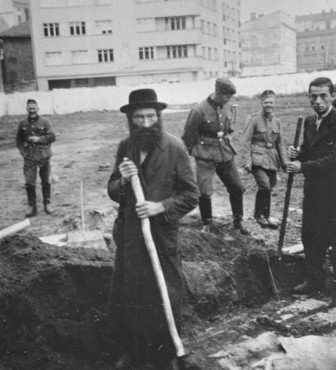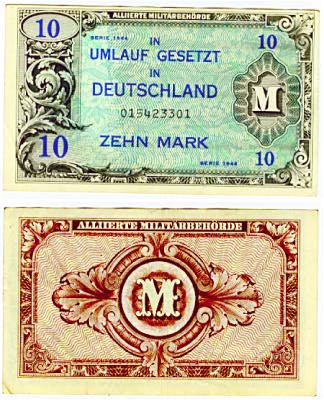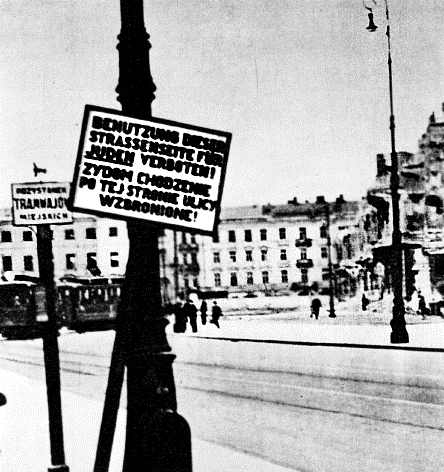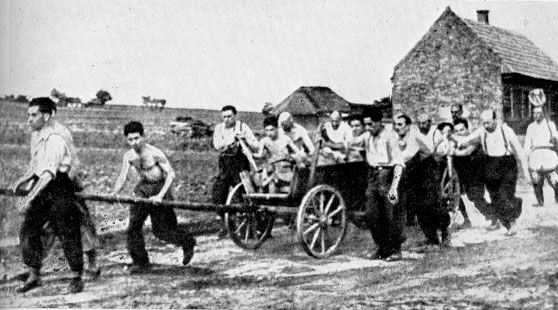Holocaust Education & Archive Research Team |
Occupation German Occupation of Europe Timeline
-
[The Occupied Nations]
Poland Austria Belgium Bulgaria Denmark France Germany Greece Hungary Italy Luxembourg The Netherlands Norway Romania Slovakia Soviet Union Sudetenland | ||||||
The German Occupation of Europe
1938 - 1942
On the eve of World War II, the Führer (Adolf Hitler) publicly threatened the Jews of Europe during a speech in Berlin. "In the course of my life I have very often been a prophet, and have usually been ridiculed for it. During the time of my struggle for power it was in the first instance only the Jewish race that received my prophecies with laughter when I said that I would one day take over the leadership of the State, and with it that of the whole nation, and that I would then among other things settle the Jewish problem. Their laughter was uproarious, but I think that for some time now they have been laughing on the other side of their face. Today I will once more be a prophet: if the international Jewish financiers in and outside Europe should succeed in plunging the nations once more into a world war, then the result will not be the Bolshevizing of the earth, and thus the victory of Jewry, but the annihilation of the Jewish race in Europe!" ---------------------------------------------------------------------------------
During the years between 1938 and 1941 the Germans through a mixture of diplomacy, and military conquest, dominated most of continental Europe.
Following the Sudetenland becoming part of the Reich in September1938, with the Munich Agreement the Germans marched into Prague on 15 March 1939, Hitler declares that “Czechoslovakia has ceased to exist”.
On 1 September 1939 the Germans invaded Poland and after ignoring an ultimatum to withdraw his troops, Britain, France, Australia, New Zealand declare war on Germany.
The Second World War had begun.
The Germans employed a fast, well co-ordinated tactic known as Blitzkrieg (Lightning war) to rapidly defeat their enemies, using tanks and planes, the trench war and relying on forts such as the Maginot Line, were consigned to history, the Germans simply just went round them, in fast moving attacks.
After invading despite a gallant effort against a far superior equipped invader the last Polish resistance ended on 6 October 1939.
Poland and its people were now to face almost six years of brutal terror, particularly true in the case of the Jews of Poland.
After a period of relative calm known as the “phoney war”, the Germans occupied Denmark and invaded Norway on 9 April 1940 and Norway capitulated on 10 June 1940.
On 10 May 1940 Germany begin their attacks on Western Europe – Holland, Belgium, Luxemburg and France.
Again as in Poland Blitzkrieg tactics were used and after a particularly brutal bombing by the Luftwaffe on Rotterdam on 14 May 1940, the day after Holland capitulates.
Despite the best efforts of the Allies, the British Expeditionary Force(BEF)has to be evacuated off the beaches in Dunkirk, along with French and Belgian troops, and brought to Britain in a variety of boats from 26 May 1940.
The German advance continued and on 13 June Paris was declared an open city, and a day later the German army occupied Paris.
On 22 June 1940 the Franco – German armistice was signed at Compiegne, France is divided in two with an occupied zone controlled by the Germans and an un-occupied zone controlled by the French Government under Petain in Vichy.
At the end of June 1940 the Germans occupy the Channel Islands of Guernsey and Jersey.
Following the failure of the Luftwaffe in the summer of 1940 to bomb Britain into submission, Hitler postpones the planned invasion of Britain, which bore the code name – Operation ‘Sealion’.
The Germans then invaded Greece and Yugoslavia on 6 April 1941and by the end of the same month, both countries are under German rule, and following an airborne invasion of Crete, by 5 June 1941, the Germans are claiming they have taken 15,000 Allied prisoners.
On 22 June 1941 the Germans and their allies invaded Russia in the most brutal and costly military campaigns in the history of the world.
Blitzkreig seems to be unstoppable as the Germans capture city, after city, millions of prisoners of war and vast areas of Russia territory.
This advance is stopped on 27 November by a combination of stiff Russian resistance and the early onset of “General Winter”.
Life Under the Germans
The administration of the Nazi empire in practice took on variant forms of the same general pattern, as in the Reich, those incorporated into the Reich became Gaue, or districts, headed by Gauleieters, (administrative governors), like the rest of Germany.
Families of German stock were uprooted and moved into these ‘Germanised’ territories, while non-Germans were ruthlessly dispossessed to make room for them. These new German citizens were given their representatives in the Reichstag.
As for the occupied territories which were not incorporated, these were normally controlled by a civilian Reich Commissioner, Minister or Governor –General – such as Dr Werner Best in Denmark and Dr Hans Frank in the General- Government (Poland). These men were expected to work in direct association with the commander of the German occupation forces and the head of the SS and Security Police.
Alternatively, they were placed directly under the control of the military commander because they were areas of primary strategic importance – as in the case of Belgium, northern France and Yugoslavia.
The nature of the control and treatment of the main occupied territories differed according to Hitler’s conception of their status in the ‘New Order’ in Europe. A number of new puppet states were created – the Protectorate of Bohemia – Moravia, and Slovakia.
In countries, which it were thought, might be responsive to the Germans, puppet governments were established such as that under Major Vidkun Quisling – an active Nazi in Norway or that under Marshal Petain in Vichy France.
Other countries such as Belgium retained their normal governmental administration, but remained “headless” under German control.
Hitler’s appointments of his principle ministers and commissioners were often arbitrary to say the least, ranging from Dr Werner Best, who was seen as reasonable and Dr Arthur Seyss-Inquart in Holland to the other extremes.
On the other hand the selection of the ruthless and emotionally unstable Dr Hans Frank to subdue the hated Poles and of Heydrich – the cold-blooded intelligent and cruel SS general – to put fear into the hearts of the restive Czechs in the Protectorate of Bohemia – Moaravia were both in a sense punitive appointments.
Alfred Rosenberg, an utterly impractical, weak and uninspiring man was given the position of Reichs Minister for the Eastern Territories, following the invasion of Russia.
As the rule of the occupier became more arbitrary, the weight of German decrees was felt to be increasingly onerous. Local laws expressing the will of the occupying powers were constantly introduced, by the puppet or headless governments.
Gradually the citizens of France, Belgium, Holland Norway and Denmark found themselves subject to the Nazi criminal code and the hideous form of rule known as the police state.
In a Police state the citizen no longer enjoys any legal protection against the actions of the police, nor does he or she retain any control over rules and regulations that are introduced to restrict rights and liberties. The rule of law is replaced by the rule of fear.
So in time after occupation, the Secret Police arrived, a complex mix of SS / SD/ SIPO / Police and Gestapo.
They moved in behind the German army and immediately assumed their special duties. Members of the Gestapo seldom, if ever, wore uniforms and they acted like secret agents. Against them one had no redress – when they arrived and took you, you just disappeared into their cells, often never to be heard of again.
This system of rule by terror was eventually to be given the cover name ‘Nacht und Nebel’ (Night and Fog) decree of December 1941, empowering the secret police to seize anyone endangering German security and make them vanish without trace from the midst of their despairing and terrorised families, who never heard from them again, in most cases.
In many respects the Germans acted as if they were not merely occupiers but owner-occupiers as well, property and goods were confiscated on an increasing scale. This first became apparent in the wholesale dispossession of Poles and especially Polish Jews, in favour of incoming German nationals in the incorporated territories. Jews were herded into ghettos and their property was confiscated.
Dispossession was also common in the Netherlands, so that Germans or pro-Nazi Dutch might be rewarded with the goods and property that belonged to others.
Through exercising control over the use of labour and over the wages payable it became possible to direct the energies of the subject peoples to the maximum benefit of Germany.
The control of labour and the nature of all production became a key matter, and was to lead in its most virulent form to the introduction of slavery. Workers were issued with work-books or cards, and the free deployment of labour was completely prohibited.
Different systems of control were adopted in the various occupied territories. In Poland, inhabitants of the General-Government between the ages of 18 and 60 were subject to labour conscription and the lower age limit could be reduced to 14 at the discretion of the district governors.
In the case of the Netherlands, Norway, France and Belgium pressure was brought to bear on the subject workers to volunteer for work in Germany. Sanctions were imposed on those that refused to go.
In the Netherlands labour conscription was introduced initially for special work which remained within the Netherlands – this was abolished in March 1942 after which youths and girls between 18 and 25 could be forced to work in Germany.
In Belgium in October 1942 men between 18 and 50 and women between 21 and 35 could also be forced to work in Germany.
Jews were forbidden to earn wages at all, but their labour was hired out from the ghettos by the occupation authorities at fantastic profit while the rations of the Jewish workers were kept down to starvation level. The introduction of slave-labour for the most part followed the invasion of Russia.
The press of course came under severe restrictions and in Holland for example was held in contempt by most Dutchmen as a German mouthpiece. Some daily newspapers were edited by Dutch Nazis installed as replacements for former editors who had resigned or been forced to leave, but others remained under their pre-war direction.
The General Dutch Press Bureau was run by a German Willi Hanke, and all its news came through the official German news agency. Directives issued by the Press Bureau forbade the printing of any criticism against the Germans, news of Jewish persecutions, reports about the Dutch royal family, or any mention of British or American art.
Any German setback in the war had to be printed in small type and flanked with big headlines proclaiming German victories.
During 1941 the food situation in Holland, as in other occupied countries became worse. Farmers were ordered to handover one seventh of their produce to the Germans, and to grow more potatoes, corn and rapeseed.
Almost all food was rationed – coffee, tea, bread, fats, meat, cereals, eggs, milk although rations could be supplemented by visiting a black market coupon dealer.
There were many other annoyances, such as curfews, everyone had to be indoors in Holland between midnight and 4 am and from early 1941 everybody was compelled to carry an identity card showing a photograph and two fingerprints.
In terms of Poland following the cessation of fighting, areas of western and northern Poland, together with the free city of Danzig, were incorporated immediately into Germany, and the main territory of the Reich became once more directly linked with the isolated area of East Prussia, which had been cut off by the so-called Polish Corridor.
The eastern areas of Poland were, by advance agreement between Hitler and Stalin taken over by the Soviet Union, leaving the General – Government, the rump of Poland in the middle.
The Government- General was placed under Hans Frank with its capital Krakow, it was a quarter of the area before the invasion and about one third of Poland’s pre-invasion population of 35 million people.
In the territories incorporated into the Reich everything was placed in the hands of the various Gauleiters, and everything Polish was eliminated in favour of total Germanisation.
Conscription was introduced, together with Goring’s Four –Year Plan, placing the economy on a war basis, while the Nuremberg Laws dispossessed the Jews of all their rights and citizenship. The Courts of Law became German, and by November 1939, the only legal currency was the Reichsmark.
By a decree of 17 September 1939 the property of all Polish citizens became subject to confiscation, while the property of Jews was automatically confiscated.
The economy of the General-Government was gradually strangled to force the production of iron, steel, coal, hides and furs solely for the benefit of Germany.
Private trade was gradually destroyed as Germany became the only viable customer.
On the cultural side, education came under the direct supervision of a department of the Reichs Minister.
German children were naturally segregated from the Polish children and had their own schools. The universities were closed and the only further education for Poles was technical training which would enable them to become more effective industrial workers.
Valuable works of art, whether publicly or privately owned were confiscated wholesale and removed to Germany.
Social events for the Poles were in general forbidden because they favoured the development of the resistance movement.
From April 1941 dances held in either public or private were prohibited.
Despite Frank’s power, Himmler’s representatives were to prove too much for him and the concentration and death camps in the General – Government,were soon put out of bounds to him and his staff by the SS.
Frank was a virulent anti-semite, and in December 1941 he records in his diary his infamous speech;
As far as the Jews are concerned I want to tell you quite frankly that they must be done away with in one way or another
I know that many of the measures carried out against the Jews in the Reich at present are being criticised.
Before I continue, I want to beg you to agree with me on the following formula:
We will in principle have pity on the German people only and nobody else in the whole world. The others too had no pity on us. As an old National Socialist I must say this:
This war would be only a partial success if the whole of Jewry survive it, while we had shed our best blood in order to save Europe.
My attitude towards the Jews will therefore be based only on the expectation that they must disappear. They must be done away with.
Gentlemen, I must ask you to rid yourselves of all feeling of pity.
We must annihilate the Jews wherever we find them and wherever it is possible, in order to maintain the structure of the Reich as a whole.
So it was in Poland that the policy of genocide for the Jews first became active. Though genocide did not become a fully –recognised policy until Germany invaded the vast Russian territories, the destruction of the Polish people, and in particular the destruction of Polish Jewry began well before June 1941.
Sources:
The History of the Second World War – published by Purnell London 1966 NARA PRO
Copyright H.E.A.R.T 2007
|

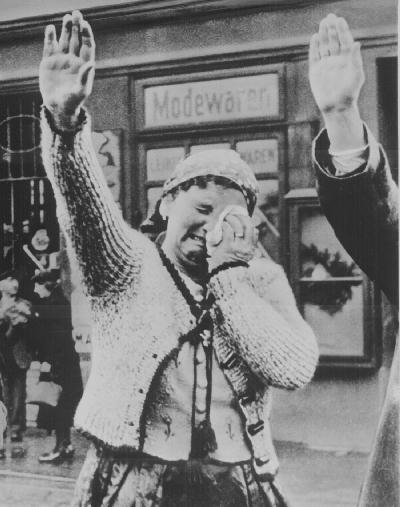
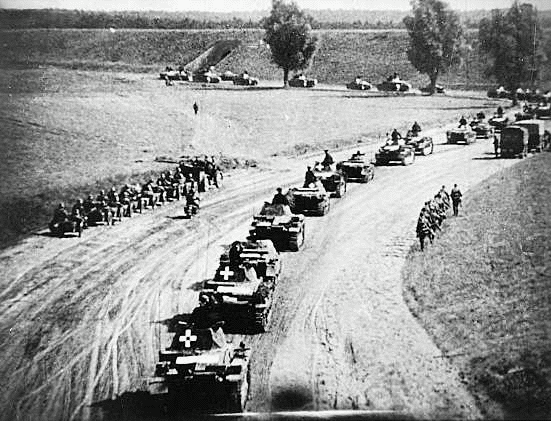

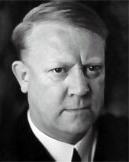
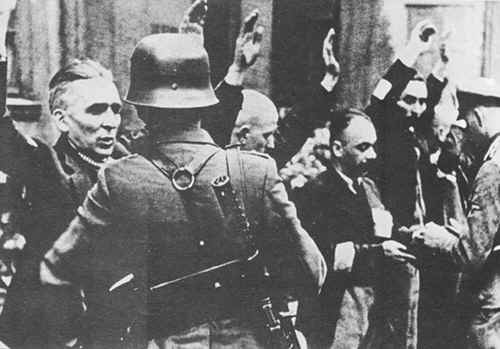
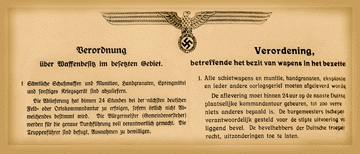
 '
'